By Alexander Zarkzewski
On the foggy morning of November 30, 1808, Napoleon Bonaparte, Emperor of France, watched impatiently as his Grande Armée lumbered up the rocky slopes of the Sierra de Guadarrama Mountains of central Spain. It was the last obstacle before Madrid and certain victory over the rebellious Spanish. In anticipation of his advance, a small but determined Spanish force had fortified the narrow pass that led through the sleepy mountain village of Somosierra. As the French advance stalled in the face of withering cannon and musket fire, Bonaparte turned to the 3rd Squadron of the Chevau-Légers Polonais of the Imperial Guard and impetuously ordered them to charge the enemy positions. Miles from their eastern homeland, the Polish horsemen dutifully responded. The result was an unlikely victory and one of the most spectacular cavalry charges of the Napoleonic Wars.
A “War to the Knife” in Spain
In 1807, war with Portugal furnished Bonaparte with the pretext for sending thousands of French troops into Spain. Despite being France’s nominal ally since 1796, the Spanish government was corrupt and ineffectual and its people backward and impoverished. Consequently, the French emperor deemed the time right to extend his control over the whole of the Iberian Peninsula. As the French marched through the country, they made a point of subtly occupying the strategic routes, towns, and villages through which they passed. On March 23, 1808, General Joachim Murat, Bonaparte’s brother-in-law, affirmed their true intent by marching into Madrid with 20,000 men, effectively placing the country under French military rule. At the same time, Bonaparte masterfully exploited a dynastic quarrel between the Spanish King Charles IV and his son Ferdinand VII to his own advantage. Posing as mediator, he invited both father and son to Bayonne, where he forced both their abdications and handed the Spanish crown to his brother Joseph, King of Naples.
[text_ad]
While the Spanish people had no great love for the ruling Bourbons, resentment toward the occupiers had begun to boil over, and on May 2 the citizens of Madrid rose up in rebellion and attacked the city’s French garrison. Murat’s bloody suppression of the revolt only served to further enflame nationalist outrage. Provincial juntas quickly raised their own armies to combat the invaders, and an alliance with Britain was secured. French forces, disorganized and poorly led, soon found themselves assailed from all sides, and on July 20, 1808, Europe was astounded by the news that an 18,000-strong French corps commanded by General Pierre Dupont had been surrounded and forced to capitulate at Bailén. The myth of the Grand Armée’s invincibility was irrevocably shattered.
Worsening French woes was the intensifying guerrilla war, which was making supply and communications across the peninsula increasingly difficult for the occupiers. In this “war to the knife,” as Spanish General Jose Palafox described it, prisoners could expect little mercy, and both sides readily engaged in brutal terror tactics. Moreover, on August 1, a British Expeditionary Force under the command of Sir Arthur Wellesley landed in Portugal and within three weeks forced the capitulation of French General Jean Junot and 26,000 of his men. So untenable had the situation become that after only 10 days on the throne, Joseph Bonaparte, dubbed “Joseph the Intruder” by his contemptuous subjects, was forced to abandon his empty capital and retreat to a tenuous defensive line along the Ebro River.
When news reached Paris of the disastrous developments on the peninsula, Napoleon was aghast. After castigating his generals for their incompetence, he declared, “I realize I must go there myself to get the machine working again.” He sent Joseph a flurry of orders assuring him that help was on the way, and after making contingency plans for war with Austria he ordered 130,000 men, mostly veterans of previous campaigns, to leave central Europe for Spain. Commanded by the cream of the French marshalate—Ney, Soult, Victor, Mortier, Bessières—this new invasion force was a massive instrument of war organized into seven army corps, a cavalry corps and a reserve that included the Imperial Guard. Among the guard cavalry were the Chevau-Légers Polonais.
Chevau-Légers Polonais
When Napoleon entered Warsaw in December 1806 during the War of the Fourth Coalition, he was welcomed as a liberating hero. A decade earlier, Poland had been partitioned by Russia, Prussia, and Austria and erased from the map of Europe. Patriotic sentiment remained high, however, and as a show of gratitude for his defeat of the partitioning powers, the citizens of Warsaw raised a guard of honor to escort and protect the French emperor during his stay in Poland. Recruited from among the best noble families in the country, these men greatly impressed Bonaparte by their stature, manner, and horsemanship, and in March 1807 he ordered the creation of a 600-strong Chevau-Légers Polonais (Polish Light Horse) regiment to serve as part of his Imperial Guard.
Chosen to command the regiment was Count Wincenty Korwin Krasinski, a nobleman and patriot of considerable influence. Krasinski had served in the national cavalry before the partitions and was instrumental in organizing the Warsaw honor guard. However, Krasinski spent most of his time away from the regiment serving as a courtier to Bonaparte, and Colonel-Major Pierre Dautancourt was very much the regiment’s true commanding officer. Affectionately nicknamed “Papa” by his men, Dautancourt had made his name as a cavalry officer in the Gendarmerie d’élite of the Imperial Guard, and it was he who saw to the organization and training of the regiment and accompanied it on campaign.
While most of the officers were Poles already in French service or who had served in the Warsaw honor guard, the regiment’s colonel-majors as well as its staff officers and instructors, were all Frenchmen pulled from other units. All four squadron commanders were Polish, however, and after the creation of the Duchy of Warsaw in July 1807, further suitable volunteers were drawn from the newly created Polish Army. The creation of the regiment reflects Bonaparte’s growing need for foreign contingents to make up for the high losses he incurred during the Prussian Campaign as much as it does his high impression of the Poles. It is also indicative of his desire to expand his cavalry arm, which had served him so effectively during the campaign, to unprecedented numbers.
Despite this need, enlistment criteria were set deliberately high in order to meet the standards of the Imperial Guard. Only gentlemen of means and education were accepted as officers, and even troopers had to be landowners capable of paying for their own horse, uniform, and equipment. Although height requirements were eventually relaxed, Bonaparte’s proclivity for large cavalrymen was such that the Poles’ enemies frequently noted their imposing size. Before a recruit was accepted, he had to present himself along with proof that he met all requirements to Prince Józef Poniatowski, nephew of the last king of Poland and war minister of the Duchy of Warsaw. Only then could he count himself among the French emperor’s élite.
The regiment’s uniforms were dark blue with red facings and offered a resplendent mix of Polish military tradition and Imperial France. The tight-fitting trousers had a double red stripe running down each leg, while the kurtkas (jackets) were fronted by a large red plastron and high collars, both edged with silver lace. The most distinguishing feature was the traditional square-topped Polish cavalry cap or czapka that, following the Napoleonic wars, would become standard issue in cavalry regiments throughout Europe. Roughly eight inches in height, each czapka bore a tri-color cockade and a large bronze frontal plate containing a crowned “N” identifying the horsemen as soldiers of the emperor. In the field, each man carried a saber and two pistols, as well as a carbine with bayonet, a surprisingly heavy load yet typical of light cavalry units of the era.
“There Will Not be a Single Village in Revolt”
The first detachments of the Chevau-Légers Polonais arrived in Spain in late June 1808, just as the French position on the peninsula began deteriorating rapidly. As yet untested, they were placed under the tutelage of General Antoine Lasalle, who commanded the cavalry in Marshal Bessières’ corps. Lasalle was a brilliant and dashing cavalry officer who openly believed that no French hussar ought to live past the age of 30 (he was killed at the Battle of Wagram in 1809 at age 34). Despite his bravado, Lasalle cared deeply for the welfare of his horsemen, and the Poles came to greatly respect and admire him as they learned the duties of light cavalry in the field. At the Battle of Medina Del Rioseco on July 14, he led an ad hoc group of cavalry that included some Chevau-Légers in a last-minute charge that turned a desperate situation into an impressive victory. However, the disasters at Bailén and in Portugal negated any such successes, and by the autumn of 1808 the Poles had withdrawn with the remaining French forces to the Ebro. The real test was yet to come.
On November 4, Bonaparte crossed into Spain with his relief army and began a whirlwind campaign designed to smash Spanish resistance, push the British out of the peninsula, and reassert French control for good. He assured Joseph that by January, “There will not be a single village in revolt.” After a crushing victory at Gamonel, in which the Spanish lost 3,000 men at the cost of a hundred French soldiers, Bonaparte entered Burgos on November 10. As the French forces moved north and south in a massive effort to encircle the bewildered Spanish, the emperor made plans to advance on Madrid. On November 23, after the Spanish Army of the Center was scattered at Tudela, he set out toward the capital with a 45,000-strong vanguard.
Two Mountain Passes
With the Spanish armies shattered and retreating, all that stood in Napoleon’s path was the Sierra de Guadarrama Mountains. Running roughly 50 miles through the heart of central Spain, the mountains offered Madrid a natural northern defensive barrier. In the capital, General Benito San Juan quickly realized that once the French were over the mountains, he stood no chance of holding the city, which was already in a growing state of panic. San Juan was an experienced and capable officer who had commanded the personal bodyguard of Spanish Prime Minister Manuel de Godoy. He pulled together an ad hoc force of roughly 21,000 regulars and militia with 16 cannon and began making plans for an indirect defense in the mountains.
There were two main passes, both of which would have to be defended. The Guadarrama Pass lay northwest of Madrid, and San Juan prudently predicted that Bonaparte would instead follow the main road south from Burgos and up through the pass near the village of Somosierra. It was the quicker and more direct option, and the Spanish commander split his forces accordingly. While he sent 9,000 men to guard the Guadarrama Pass, 7,500 Spaniards and all 16 guns were prepared to meet the French at Somosierra. The remaining men were sent to an advanced position north of the mountains at Sepulvida.
For the outnumbered Spanish, the Somosierra Pass offered ideal ground for a strong defense. The road that ran through the pass wound four miles through the mountains, climbing 960 feet and crossing several streams as it went. After a gentle ascent for the first few miles, the road steepened sharply as it entered an increasingly narrow defile. A series of rocky spurs bulged out of the mountains on either side of the road as it approached the summit where, at an altitude of 4,700 feet, there stood the Ermitage de Nuestra Senora de la Soledad chapel. From that point, the ground leveled off before beginning a gradual descent past the village of Somosierra.
San Juan divided his cannon into four batteries. At the summit, where the defile widened and the ground leveled, he mounted 10 guns behind an improvised fortification manned by 2,000 men. Three smaller batteries of two guns each—all that could fit along the narrow road—were mounted at regular intervals of about 550 to 750 yards, the first of which stood at the entrance to the pass behind the stone bridge that crossed a small mountain stream call the Duraton. The rocky slopes alongside the road were steep and full of trees and vegetation but still traversable by infantry, and it was here, facing the entrance to the pass, that San Juan positioned the majority of his men.
“I Will Thank Him Up There”
As the French advanced southward toward Madrid, the Spanish advance guard at Sepulvida melted away without a fight, and by November 29 Bonaparte and his forces were at Boceguillas, only 15 miles north of the pass. The next day, in the early morning hours, the emperor rode out with his staff to reconnoiter the pass for himself and complete his plans for the coming battle. He was accompanied by a detachment of guard cavalry that included the Chasseurs à Cheval and the Chevau-Légers Polonais. His duty squadron that morning was the 3rd Squadron of the Chevau-Légers commanded by Jan Kozietulski.
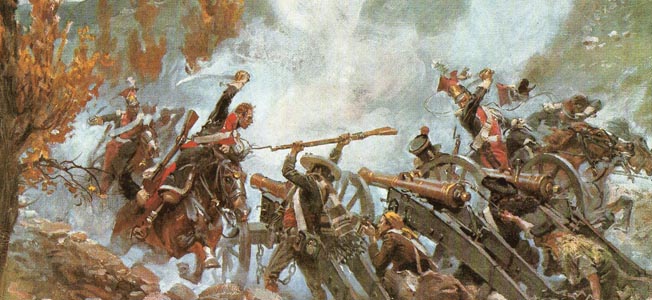
A thick fog hung in the air that morning, effectively obscuring the Spanish defenders. Unable to gauge the enemy positions, Bonaparte and his staff decided to dismount, make camp, and await the arrival of the main French force. As the emperor sat with his staff poring over maps in preparation for the coming attack, legend has it that a curious scene took place. While Bonaparte and his entourage deliberated, a lone member of the Chevau-Légers approached the fire. Bonaparte’s aides angrily waved him away, but the emperor allowed him to pass. The trooper calmly walked up to the fire, lit his pipe, and turned to leave without saying a word. As he was walking away, one of the officers scolded the trooper for his impertinence and insisted that he thank his emperor for the privilege. The Pole instead raised his arm, pointed to the summit, and said, “I will thank him up there,” before walking off.
Attack in the Fog
The fog had not cleared by the time the main French force began to arrive and, as a result, Bonaparte still could not make out the enemy positions. He ordered a member of his staff, Major Phillipe de Ségur, to ride into the entrance of the pass with a detachment of Chasseurs à Cheval and survey what he could. Despite the fog, the Spanish heard the cavalrymen approaching and quickly scattered them with a volley from the first battery. At 9 am, still unsure of what awaited his men, Bonaparte ordered General Francois-Amable Ruffin’s division, part of Marshal Claude Victor’s corps, to engage the enemy in a three-pronged attack designed to overwhelm any opposition. The 24th Line Infantry Regiment was to advance up the slopes to the east of the main road while the 9th Light Infantry did the same on the western side. As these flanking attacks were dislodging the enemy troops on the slopes, the 96th Line was tasked with forcing the road itself and breaking through to the summit.
Ahead of the line infantry went the voltigeurs. Composed of the best shots in the regiment, these specially trained units covered the infantry’s attack by advancing ahead of the main line in loose formation and disrupting the enemy positions. However, that day a combination of fog and difficult terrain coupled to slow the French advance on the slopes, and as soon the voltigeurs came into contact with the well-positioned Spanish they were met with a volley of concerted musket fire. The 96th made better progress along the road until it came to the bridge over the Duraton, where it was greeted with fire from the first Spanish battery.
Further hindering the French attack was the fact that the Spanish had damaged the road leading to the pass. Consequently, the French artillery was slow in supporting the infantry. Moreover, the narrowness of the road was such that only three guns–two 8-pounders and a 24-inch howitzer from the 3rd Regiment D’Artillerie à Cheval–could be brought up in support. The first Spanish battery consisted of only two 4-pound cannon, but it had the advantage of the high ground as well as a protective earthwork. In the narrowness of the pass, the two guns proved deadly effective. The French guns were quickly under fire and could not effectively concentrate on the Spanish positions for any length of time before having to reposition.
“Impossible? I Do Not Know This Word”
Sometime between 11 am and noon, the fog finally began to lift, and Bonaparte ordered Lieutenant Andrzej Niegolewski, the youngest officer in the regiment, to take a platoon of Chevau-Légers from the 3rd Squadron, reconnoiter the enemy positions as best he could, and seize Spanish prisoners for interrogation. The emperor then rode into the defile to observe the situation for himself accompanied by the rest of Chevau-Légers and two squadrons of the Chasseurs à Cheval.
Once within sight of the stone bridge, Bonaparte and his retinue came under fire from the first battery. As cannonballs hissed and crashed around him, the emperor, telescope in hand, began to grow more and more frustrated at the slow progress of the infantry. Ignoring the concerns of his staff for his own safety, he turned to Colonel Piré, aide-de-camp to Marshal Berthier, and ordered him to take the 3rd Squadron and see for himself whether the first battery could be taken. Piré did as instructed, but upon seeing for himself the strength of the Spanish position and the narrowness of the road quickly returned to report that it was impossible to take the cannon from the front.
Upon hearing these words, Bonaparte’s anger erupted. “Impossible? Impossible? I do not know this word,” he exclaimed incredulously, his riding crop whistling through the air. “What? My guard halted by Spanish, by a band of armed peasants!” He turned once again to Major de Ségur, who had earlier led the Chasseurs à Cheval up the pass, and told him to order the duty squadron to take the guns. While the exact meaning of Bonaparte’s order remains vague to this day, it most likely called for the Poles to take only the first battery and open the road for Ruffin’s stalled infantry. For Squadron Leader Kozietulski, however, an order from the emperor was beyond question no matter how ambiguous. “Forward you sons of dogs, the emperor is watching you!” he shouted to his troopers who rode forth to resounding chants of “Vive L’Empereur!”
The 3rd Squadron comprised two companies: the 3rd led by Captain Jan Dziewanowski and the 7th under Captain Piotr Krasinski. The strength of the squadron at the time of the charge is generally estimated to have been about 150 sabers. Its exact number, however, is difficult to determine as Niegolewski’s platoon was still on its reconnaissance mission, and there were more men either in hospital or posted elsewhere. The narrowness of the road meant that the squadron was forced to ride four horses abreast in a column a few hundred yards long. This type of cumbersome formation made it difficult to pick up speed along the inclining path and was much more suited to marching than charging.
“Forward, Vive L’Empereur!”
As the Poles made their way toward the stone bridge and the first Spanish battery, they became a clear target for the Spanish infantry on the slopes. Once within 300 to 400 yards of the first battery, the squadron was racked by a salvo from the Spanish guns that shattered the front of the column and brought the charge to a brief halt. The Poles quickly regrouped, though, and, still under fire from the slopes, continued on toward their objective.
As the squadron approached the battery, the gunners switched to canister with deadly effect, and the road was soon littered with dead and wounded men and horses. Yet, the Poles had come too far to turn around a second time, and they plunged through the first battery furiously sabering the bewildered gunners. Having overrun the guns, the 3rd Squadron horsemen had most likely fulfilled their objective and could have stopped to await the infantry. But with their mounts gaining speed and the fire from the slopes still targeting them, they continued to the second battery. The fog, though lighter than earlier in the day, still hung in the air and was heavy enough that the Poles could not see what awaited them farther up the pass. It was equally as blinding to the Spanish defenders who, unable to make out exactly how many horsemen were coming toward them, could only sit blindly and listen as the thunder of hooves drew nearer.
[text_ad]
It was at this time that the squadron received much needed reinforcements in the way of Niegolewski’s platoon, which had returned from its earlier reconnaissance mission. Having seized prisoners as ordered, the platoon had returned to the French lines where it dismounted and began cleaning its equipment. Upon spotting the wild charge, Niegolewski did not wait for orders. Instead he rallied his men with shouts of “Forward, Vive L’Empereur!” and immediately started up the road to join the rest of the squadron, picking up stragglers en route.
From a Retreat to a Rout
As the Poles approached the second battery, Squadron Leader Kozietulski was dismounted and left behind badly bruised but otherwise unhurt. Command passed to Captain Dziewanowski, who led the column crashing threw the Spanish cannon, silencing the battery and scattering the defenders. Spurring their frothing mounts forward, the Poles continued up the narrowing and sharply ascending pass toward the next battery. The farther up the pass they went, the more fearsome the fire became from both the slopes and the cannon in front of them. Just before reaching the third battery, Lieutenant Rowicki yelled to Niegolewski that he had lost control of his horse. Niegolewski, realizing that the terrified animals were by this point running on instinct more than anything else, yelled back that he should just let the reins hang loose. It would not matter for Rowicki, however, as he was almost immediately decapitated by a cannon ball.
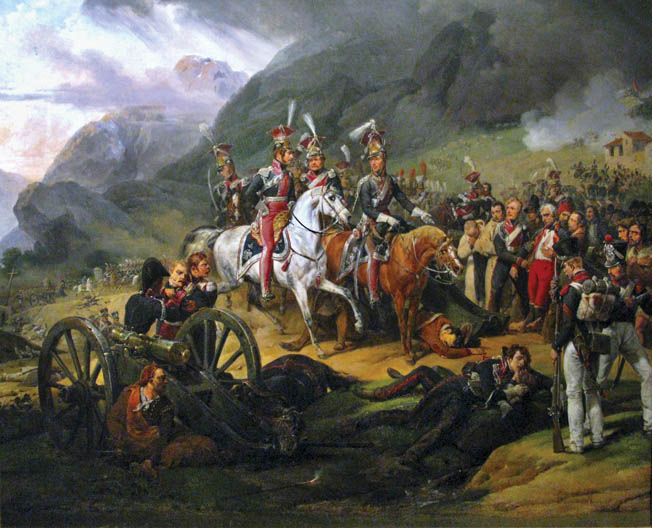
Once within site of the third battery, Dziewanoski was thrown from his horse and left by the side of the road bleeding profusely with a shattered leg and broken arm. Command passed yet again, this time to Captain Krasinski, who now led as many maddened, riderless horses as he did cavalrymen crashing through the third battery. By this point, the Spanish defenders, shocked at the speed and force of the charge and still unable to discern exactly how many horsemen were coming at them, began to dwindle away. Regulars and militia, both on the road and on the slopes, began to retreat in growing panic toward the main battery at the summit, where the Poles’ greatest challenge yet awaited them. Having come farther than anyone would have expected, the exhausted and depleted horsemen now faced 10 fortified guns and the main Spanish reserve.
As they approached the summit, it was Krasinski’s turn to be thrown from his horse, and command of the now chaotic charge passed for the final time to the late arriving Niegolewski. Unlike the badly injured Dziewanowski, Krasinski was miraculously unharmed and able to make his way back down the pass, which was by now a mess of mangled horses, dying men and abandoned Spanish equipment. Although the Poles were thoroughly outnumbered and completely disorganized, the effects of the charge’s unlikely progress on the morale of the defenders cannot be understated. The farther the Chevau-Légers traveled up the pass, the faster the enemy’s retreat became a rout. By the time the Poles reached the summit, the Spanish positions had been flooded by panicked regulars and militia fleeing in disorder and precluding any kind of effective defense. As a result, the main battery, by far San Juan’s strongest position, offered no challenge to the horsemen who, having finally reached level ground, broke off in every direction, furiously hacking anyone in their path.
Taking the Summit
With the final battery overrun, Niegolewski, his saber broken and horse wounded, paused and turned to Sergeant Sokolowski. “Where are our boys?” he asked with dismay. “They are dead!” Sokolowski replied. But the Spanish were not yet done. Fully aware of just how few Cheveau-Légers were actually left, they furiously counterattacked the outnumbered horsemen. Before the squadron could rally, Sokolowski was mortally wounded, and Niegolewski’s horse was shot out from under him, pinning him helplessly to the ground. A group Spaniards immediately fell upon him, robbing him of anything that looked to be of value and leaving him for dead with no fewer than nine bayonet and two bullet wounds.
Just as it looked like the tide of battle had turned and the Chevau-Légers were going to be repulsed from the hard-won summit, help arrived. Bonaparte, having seen the 3rd Squadron overrun the first few batteries, immediately ordered the rest of the regiment, as well as the Chasseurs à Cheval of the Guard, to support the attack. Commanded by Count Tomasz Lubienski, these reinforcements had difficulty traversing the narrow pass given the carnage and debris that now choked it. Once at the top, though, Lubienski quickly rallied the survivors of the 3rd Squadron, and once again the Spanish defenders found themselves under attack. Behind the cavalry reinforcements could also be heard the beating drums of the infantry regiments, who were now able to make their way up the slopes and road unopposed. The distant chants of “Vive L’Empereur” filled the Spanish defenders with terror, and their brave resolve once again gave way to a panicked rout. San Juan’s calls for order went unheeded as his retreating men fled southward through the mountains and into the surrounding countryside, looting any towns and villages through which they passed.
The first voltigeurs to reach the summit came across a barely conscious Niegolewski still trapped under his dead horse. Fully aware of the brutal fate that awaited French prisoners taken alive by the guerrillas, the clever officer had feigned death. Once free, he asked his rescuers to lean him against one of the captured Spanish cannons, where two surgeons hastily bandaged his numerous wounds. Lubienski had already sent word to Bonaparte that the pass had been cleared and as the emperor made his way to the summit, he too spotted Niegolewski, covered in blood and seemingly at the point of death. Moved by the young man’s pitiful state, he dismounted and knelt down beside him. Grasping his hand, he thanked him for his bravery before removing the Legion d’Honneur from his own coat and pinning it on the wounded Pole. Niegolewski recovered from his grievous injuries and would write 47 years later how he wished all young men could one day be as honored as he was at that moment.
Victory in Seven Minutes
In the space of seven minutes, the Chevau-Légers Polonais had cleared the defile, capturing 10 standards and 16 guns in the process. More importantly, they had opened the road to Madrid. Estimates as to the exact number of casualties incurred by the 3rd Squadron during the charge vary wildly due to the numerous conflicting accounts of the engagement. Only 20 men survived the charge unscathed, according to Ségur. Dautancourt, who was not present during the charge, listed 57 total casualties. However, the evening roll call after the battle noted a further 26 NCOs and troopers wounded but present. Among those who succumbed to their injuries in the days after the battle was Captain Dziewanowski who, after having his leg amputated, died in Madrid on December 5. The spectacular success of the impetuous charge provided Bonaparte with a propaganda coup and exactly the type of brilliant victory the Grand Armée badly needed to erase the humiliation of Bailén. As a result, Bonaparte deliberately understated his losses, declaring in an official bulletin on December 2, that the Poles had lost just eight men killed and 15 wounded after clearing 13,000 entrenched defenders.
While Spanish casualty figures vary as well, they were most likely lighter than might be surmised given the short duration of the engagement and the fact that most defenders simply gave up the fight and fled as the charge progressed. However, the French cavalry aggressively pursued the fleeing survivors, and as many as 3,000 prisoners were taken in the hours after the battle. Among the Spanish casualties was General San Juan, who was forced to the bear the blame for the calamity. One week after the battle, with Madrid firmly in French hands, the unfortunate general was ingloriously lynched by his own riotous men.
The morning after the battle, Bonaparte ordered the regiment drawn up for review. After personally inspecting his gallant horsemen, many of whom bore visible wounds and bruises from the previous day, the emperor removed his hat and declared, “You are worthy of my Old Guard! Honor to the bravest of the brave!” A total of eight Legions d’Honneur were awarded to the officers of the regiment and another eight to the troopers and NCOs. On December 2, four years to the day since Bonaparte’s crushing victory at Austerlitz, the regiment accompanied its emperor to the gates of Madrid, which duly surrendered two days later.
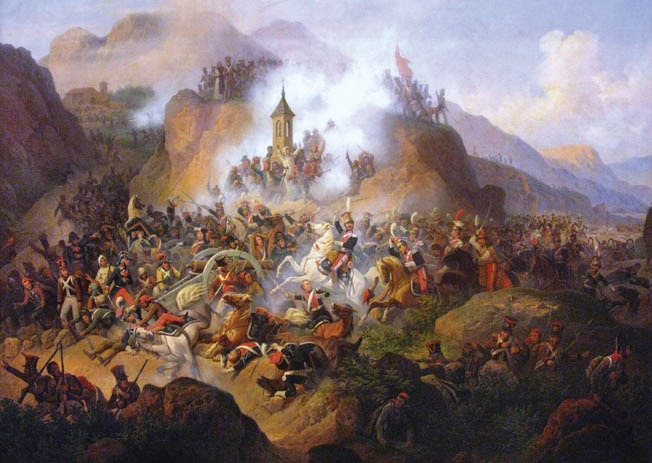
“The Devil’s Lancers”
In Poland, news of the charge caused a wave of national fervor. The men of the regiment represented some of the foremost families in the country and the cream of its military youth. Kozietulski would be known for the rest of his life as the Hero of Somosierra and was eventually made a baron of the empire. In the years after the battle, controversy arose as to who actually led the charge. Lubienski tried to take most of the credit for himself despite all accounts stating that he arrived in support with reinforcements once the summit had already been breached. Bonaparte’s bulletin claimed that General de Brigade Pierre Montbrun led the charge. However, no one present claimed to have seen him, and Montbrun reportedly laughed when informed of his participation. Adding further conjecture is the now famous painting of the battle by French artist Horace Vernet. Commissioned by the wealthy Krasinski family, the work inaccurately depicts both Colonel Wincenty Krasinski and Colonel-Major Dautancourt as present in a deliberate effort to include one of their own.
With Joseph reinstalled on the Spanish throne and the British presence on the peninsula reduced to a small force in Portugal, Bonaparte returned to France in early 1809, eager to turn his attention to a resurgent Austria and the coming War of the Fifth Coalition. In February, the Chevau-Légers were withdrawn to France, where that spring they were refitted as lancers. The regiment went on to serve with distinction across the Continent, including once again in Spain where Spanish General Palafox dubbed them “Los Infernales Picadores” (The Devil’s Lancers). In Russia, General Colbert, commander of the guard cavalry, ordered all cavalry units to borrow Polish caps and capes when going on picket duty in order to keep Cossacks away. Two more Polish regiments of guard lancers were eventually raised, and when Bonaparte was exiled to Elba in 1815, he was accompanied by 109 of his Polish lancers.
The lancers served their emperor one last time during the Hundred Days Campaign, including at Waterloo, where they were unable to break the British squares. Following Napoleon’s defeat and final banishment to St. Helena, the regiment returned to Warsaw, where it passed into the service of the Czar.
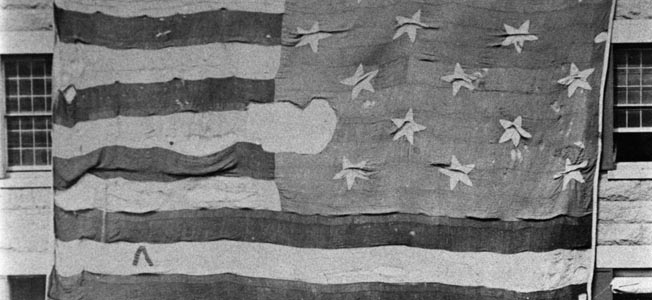

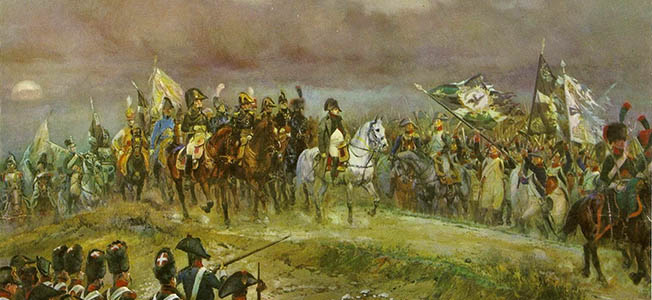
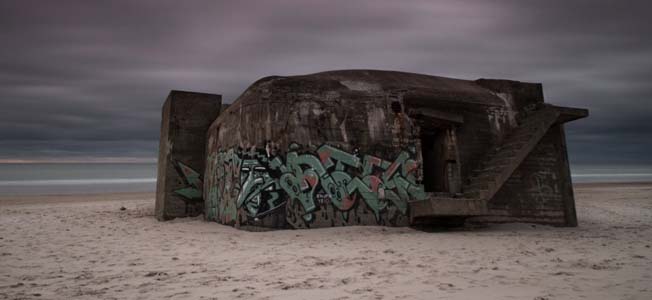
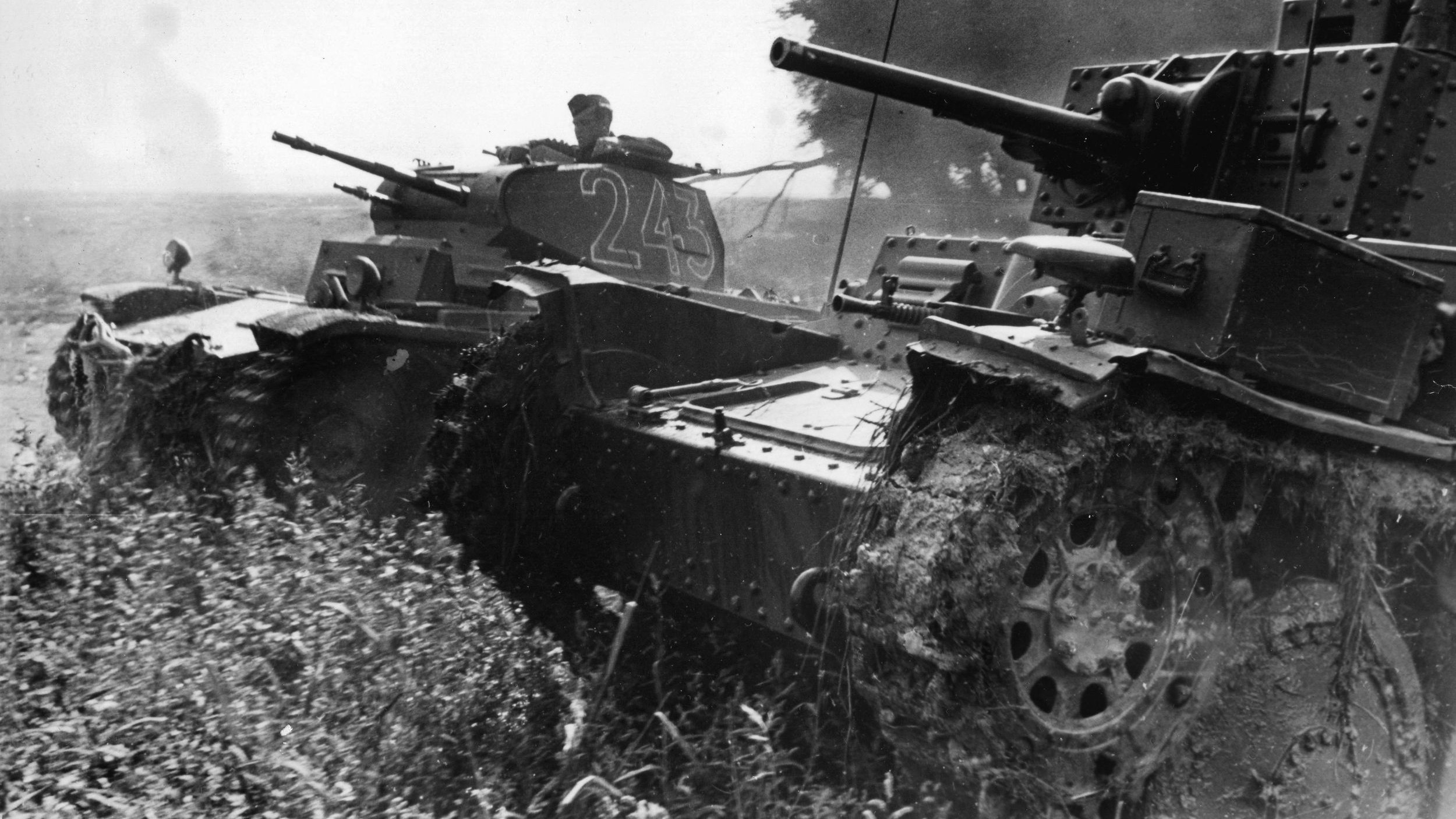
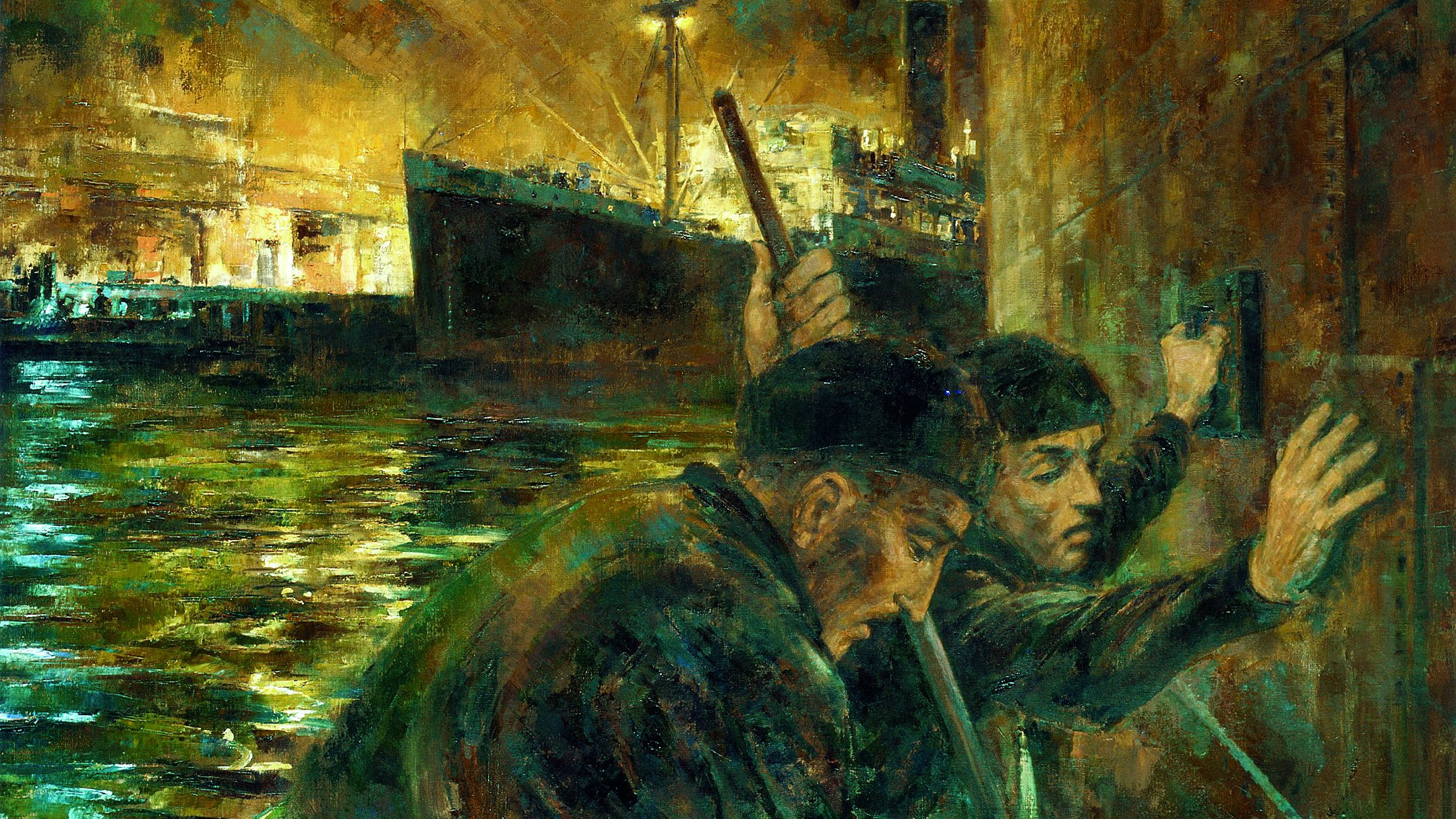
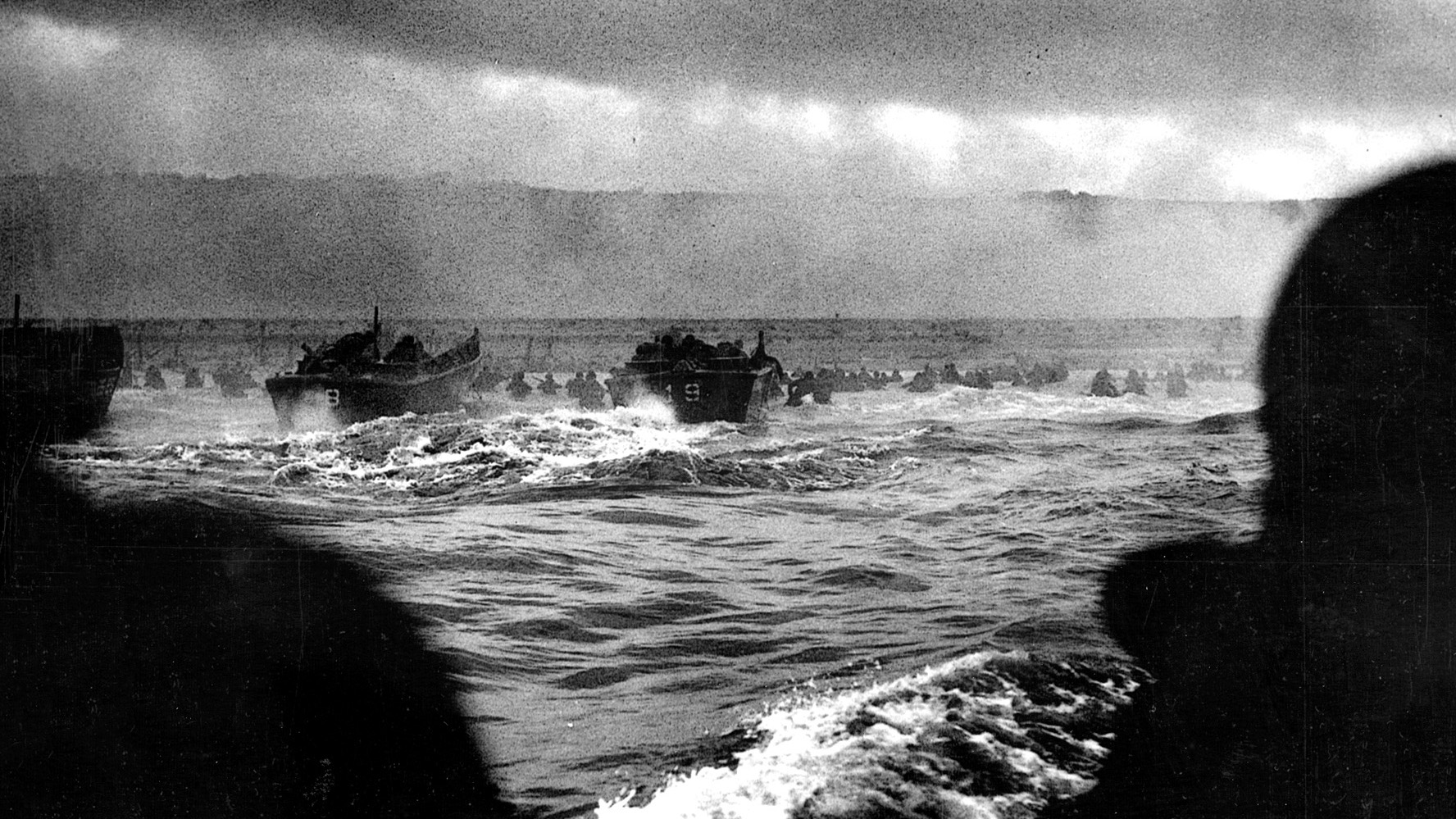
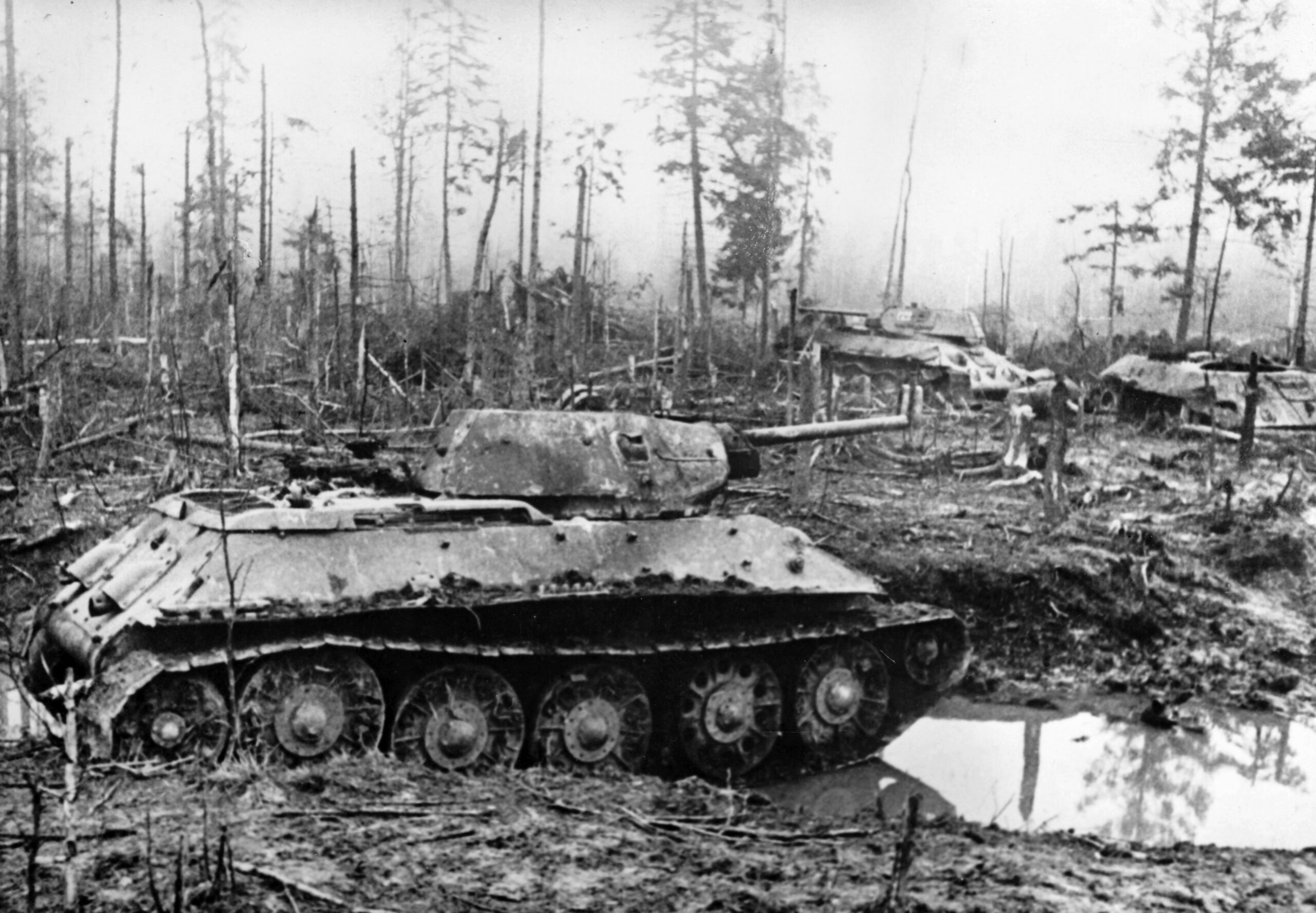
Join The Conversation
Comments
View All Comments